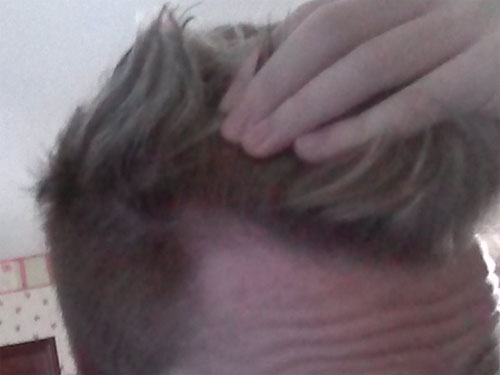Dear Dr Rassman,
Probably like most males in their 20s, I’m concerned about my hairline recession. As you say, it seems as though most men will experience some form of recession in these years whether it be balding or not.
At the moment I think it is maturing only, but very unevenly. Now, I have read posts on your blog saying that one corner moving up quicker than the other is common. Well, that is indeed happening, but the middle doesn’t seem to be moving much at all.
I first noticed some recession when I was about 19/20. Up until that point, and for a fair while longer afterwards, my hairline was extremely low and straight and so fortunately caused me no concern at all. When I first observed some change at that age, it wasn’t so much recession as that the corners were a little less dense. The left side was also less dense than the right.
I remember at that time I had experienced some diffuse shedding (telogen effluvium) and was worried I was balding. I consulted a hair specialist who didn’t seem to be aware of the ‘mature hairline’ concept and said that any recession is balding, but said I didn’t appear to be balding.
Since then I’ve been keeping a close eye on my hairline. I’d say only in the past 6 months (and I’m 23 now) has there been more marked change. The left side seems to be thinning out more completely to establish what I think (or hope) is its NW2 mature shape. I’d say the recession will be about 1.3inch from the corners. However, the middle part is still basically juvenile. The right is perhaps a NW1.5 and still more dense than the left. Is this normal?
The problem is, the angle created by a ‘juvenile’ center and a mature corner makes it look weird, more like balding, even though I think the corners are still within mature parameters. Can I reasonably expect the middle to move up by a couple of centimeters to form a less sharp, more straight and rounded angle? The problem is, it seems as though a lot of men bald by receding up through the corners, while maintaining the middle. It’s possible this may be caused by styling, i.e. the left is maturing more rapidly as I tend to comb/style from that side (using products/dryers) so perhaps the miniaturizing hairs are falling out quicker.
There is balding in my family, as both my older brothers started balding early (but at different rates), and my father also started balding in his late 30s/early 40s. However I seem to have escaped the late teens balding pattern (which struck my brothers, and they never had a really strong teenage hairline like me), and my father actually seemed to maintain a juvenile/NW1.5 hairline and his balding pattern came mainly at the crown, not the corners. My progression thus far does not seem to fit any of these patterns.
Is this encouraging? Or is it simply a matter of not being able to tell if you’re balding until you actually ARE? My grandfather on my father’s side never lost his hair and had a full head of hair when he passed away in his 80s, and my uncle on that side also never experienced MPB (though appears to possibly be experiencing some thinning at 60, but at that age I’d say he doesn’t have standard MPB).
I think my father on my mother’s side experienced balding in the 40s, but I don’t know much about my family on that side.
To summarize, it’d be a lot easier if hairlines stayed put! For sure, a solid juvenile hairline can look odd on a grown man, but NW1.5 seems the perfect compromise. Any comments on this would be greatly appreciated !
Thank you
The central part of the hairline has a different genetic code in many people. When it is small, I call it a persistent forelock, but when it is large, it takes on a different appearance, though it still has the genetic code of a persistent forelock. What you are describing is such a phenomenon. The corners mature, while the central portion of the hairline remains at the juvenile level. I just wrote an article on this topic for publication in the Journal of Facial Plastic Surgery, which is due out sometime this month.
What I think you should do is determine if you have balding on the top and/or crown of your head by getting a hair bulk analysis with the HairCheck instrument I have discussed previously on this site (see here). I suspect that your corners will continue to rise, at least, until the mature hairline areas are reached — assuming you do not have genetic balding.
Tags: hairloss, hair loss, hairline, mature hairline




